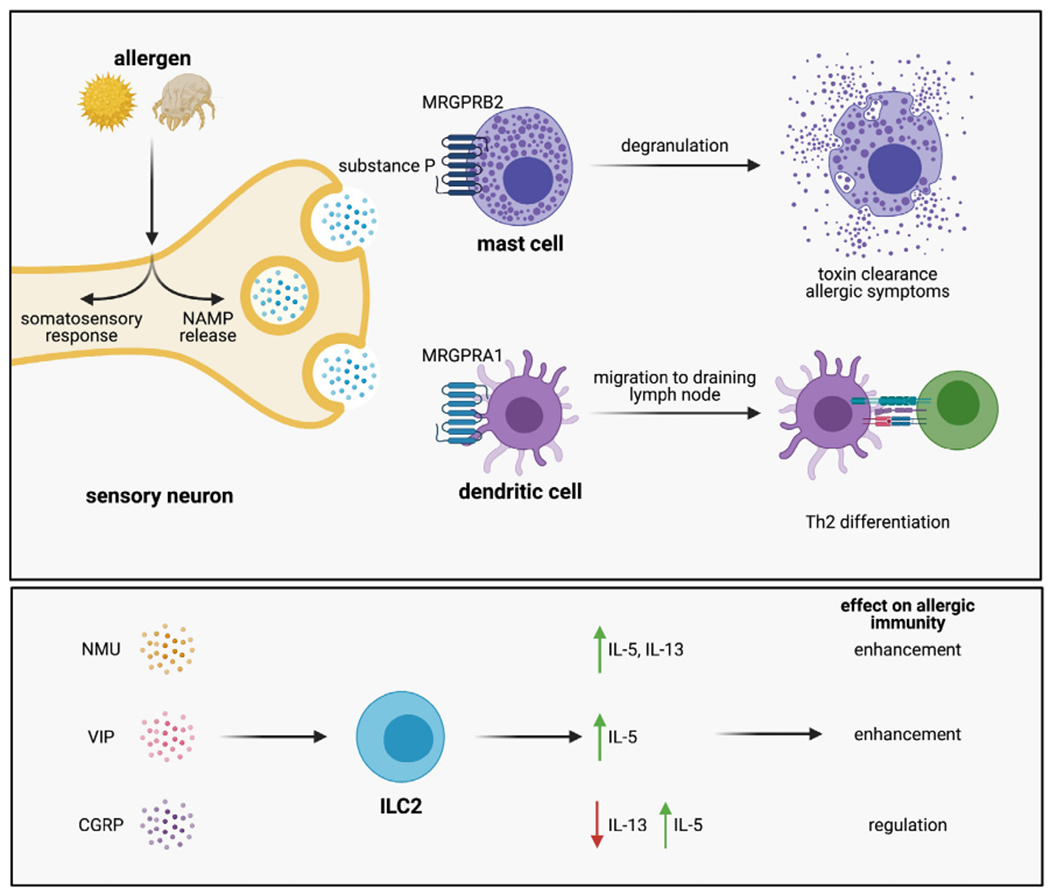Figure 2.

NAMPs control the generation of Type 2 immunity. Mast cells, group 2 innate lymphoid cells (ILC2s) and dendritic cells (DCs) are targets of NAMPs. Allergens cause sensory neurons to produce substance P, acting on local mast cells through MRGPRB2 to cause degranulation. Substance P also acts on proximally located CD301b+ dendritic cells through MRGPRA1, stimulating their migration to the draining lymph node where they initiate Th2 differentiation. Thus, NAMP release is required for rapid Type 2 effector responses and the initial sensitization to allergens. ILC2s respond to a variety of NAMPs including NMU, VIP and CGRP, which act on their own to stimulate ILC2 activation (NMU, VIP) or to regulate their activation by CGRP. While these pathways have only been studied in chronic allergic inflammation, they likely are involved in the initial clearance of toxins and sensing of allergens.
